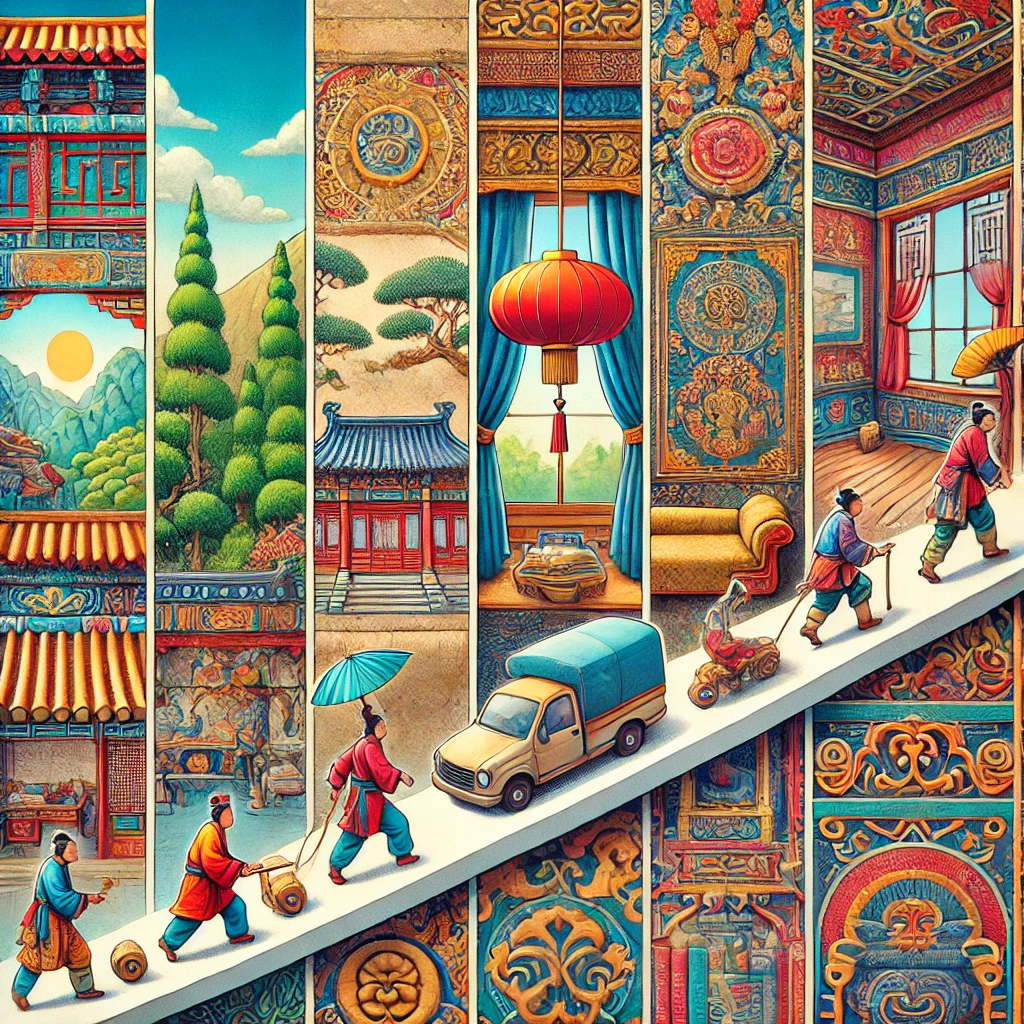
The Story of Wallpaper: From Ancient Luxury to Modern Art
Wallpaper has been a beloved part of home decor for centuries, turning plain walls into vibrant expressions of style and creativity. Its journey from a luxury item for the wealthy to a design staple for everyone is a captivating tale that reflects our cultural, artistic, and technological evolution. Let’s explore the fascinating history of wallpaper and how it has transformed into the beautiful designs we enjoy today.
The Beginnings of Wallpaper: Hand-Painted Elegance
Wallpaper’s story begins in ancient China, around 200 B.C., where the first known examples were crafted. The Chinese used rice paper, often adorned with intricate hand-painted designs, to beautify their walls. These early wallpapers were symbols of wealth and sophistication, available only to the elite.
In medieval Europe, wall coverings took the form of tapestries and hand-painted panels. These not only added beauty to homes but also provided some warmth against chilly stone walls. However, they were costly and largely inaccessible to the average person.
The Renaissance Era: The Dawn of Printed Wallpaper
The wallpaper we recognize today began to take shape in the 16th century with the introduction of block printing in Europe. Skilled artisans carved designs into wooden blocks, inked them, and pressed them onto paper. This innovation allowed the middle class to enjoy decorative wall coverings that mimicked the elaborate patterns of tapestries.
During this time, England and France became the heart of wallpaper production. French designs, often inspired by nature and classical themes, set trends that rippled across Europe. Meanwhile, England established its first documented wallpaper guild in 1599, marking a significant step in the industry.
The 18th Century: Wallpaper as a Symbol of Luxury and Creativity
The 18th century brought exciting advancements in wallpaper design, making it more colorful and intricate. One standout innovation was flocked wallpaper, which used powdered wool to create a soft, velvet-like texture. These luxurious designs adorned the homes of the aristocracy.
In France, the Rococo and Neoclassical movements inspired breathtaking wallpapers. Companies like Zuber et Cie became famous for their panoramic murals, showcasing idyllic landscapes and exotic scenes that are still cherished today.
The Industrial Revolution: Making Wallpaper Accessible to All
The 19th century ushered in the Industrial Revolution, transforming wallpaper production. Machines took over manual labor, making wallpaper more affordable and widely available. The invention of continuous-roll printing allowed for faster production and more intricate designs, leading to wallpaper becoming a common feature in middle-class homes.
William Morris, a key figure in the Arts and Crafts movement, changed the game with his nature-inspired patterns, rich in detail and craftsmanship. His designs remain timeless classics that continue to inspire.
The 20th Century: Wallpaper in the Age of Modernism
The 20th century brought a wave of change in wallpaper styles, influenced by modern art movements. The Art Deco period of the 1920s and 1930s showcased geometric designs and metallic finishes, while mid-century modern styles embraced bold colors and abstract patterns.
New materials like vinyl emerged, making wallpaper more durable and easier to maintain. The 1960s and 1970s saw a rise in playful, psychedelic designs that captured the spirit of the times.
However, by the late 20th century, wallpaper fell out of favor as minimalism took hold, with many homeowners opting for plain paint over patterned walls, viewing wallpaper as outdated.
The 21st Century: A Wallpaper Renaissance
In recent years, wallpaper has experienced a remarkable revival, thanks to advancements in digital printing and the popularity of peel-and-stick options. Today’s designs range from bold murals to subtle textures, catering to a wide array of tastes and styles.
Sustainability has also become a priority, with eco-friendly wallpapers made from recycled materials and non-toxic inks gaining traction. Wallpaper is no longer just for walls; it’s now used on furniture, ceilings, and even as framed art.
In Conclusion: The Enduring Appeal of Wallpaper
The history of wallpaper is a celebration of human creativity and our desire to enhance our living spaces. From ancient hand-painted treasures to the innovative designs of today, wallpaper has continually evolved, reflecting the tastes and technologies of each era. As we embrace its modern forms, we also honor its rich heritage and timeless appeal.